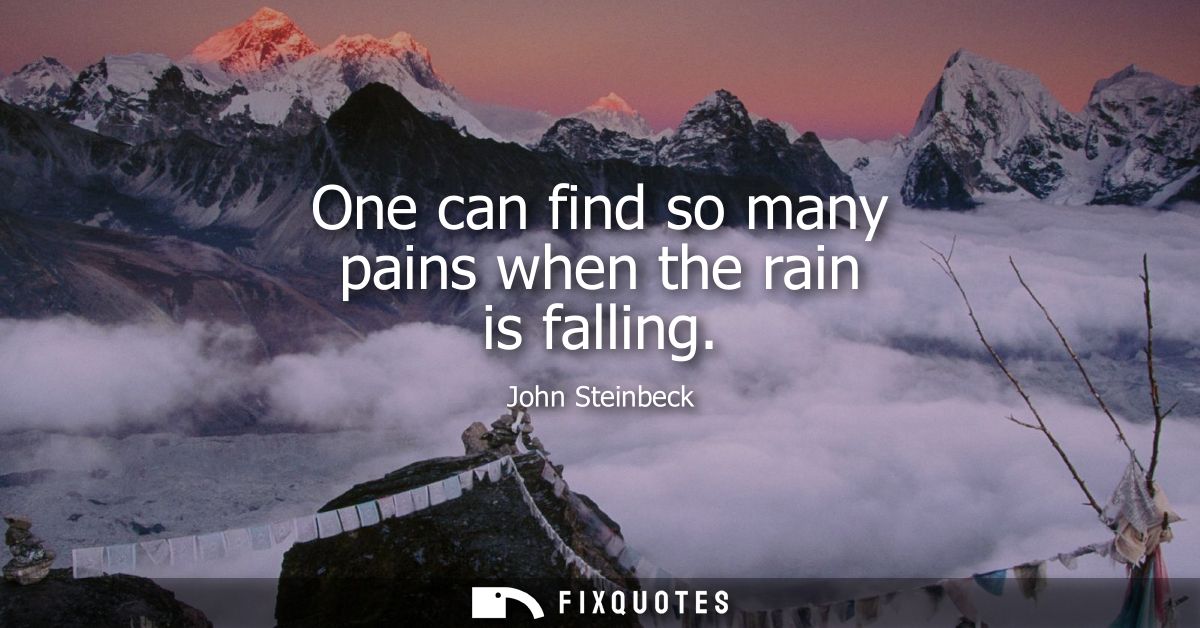"One can find so many pains when the rain is falling"
About this Quote
When the rain begins to fall, the world often turns inward, and emotions long hidden may emerge with intensity. As the gentle or relentless drops touch the earth, they can serve as a mirror for the pains each person carries. Rain has long been a symbol of sorrow, melancholy, and reflection, and its presence seems to amplify aches that otherwise might have gone unnoticed in sunshine. The rhythmic sound against windows, the heavy clouds obscuring the light, and the chill in the air invite memories and worries to surface.
John Steinbeck’s words evoke this deep association. When rain falls, daily distractions diminish, and there is space made for an honest reckoning with loneliness, losses, or regrets. The external gloom dissolves the boundaries that often keep emotional turmoil at bay. Physical discomfort, dampness, cold, or the inconvenience of disrupted plans, becomes entwined with the inner struggles people face. Pain is both literal and metaphorical, arising from circumstances worsened by the weather, and from feelings that are easier to acknowledge when the world itself seems to mourn.
Yet, there’s a paradox within the description. While the rain reveals pain, it also cleanses and renews. Amidst the heightened sensitivity, some may find comfort in realizing that their pains are not solitary. The rain’s universality means many are enduring their own hardships all at once, strengthening human empathy and connection. The lesson may rest in the idea that pain needs to be felt, accepted, and recognized. When the rain falls, it strips away pretense and busyness, offering an opportunity to confront sorrow directly, and perhaps to begin the slow process of healing. Rain, then, is not simply an external event but a state that allows deeper understanding of oneself and the myriad forms of hurt that are part of being alive.
About the Author

